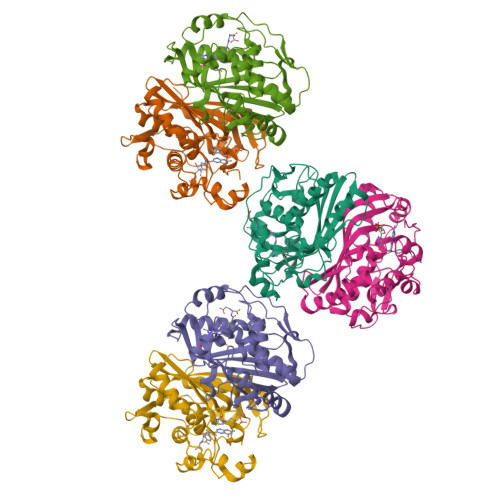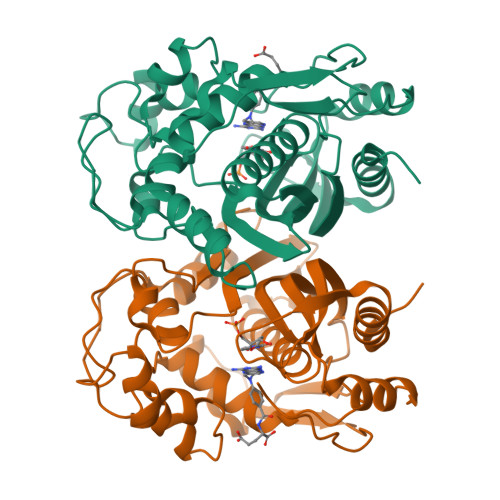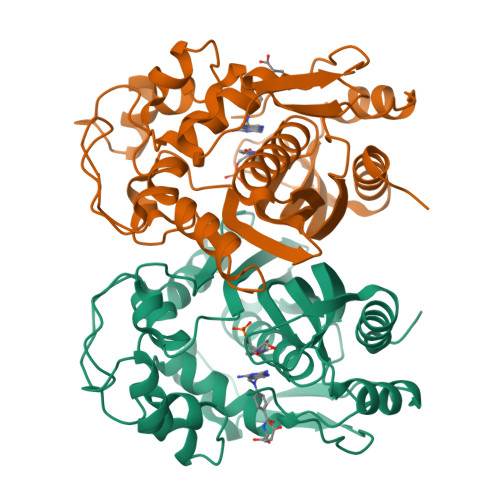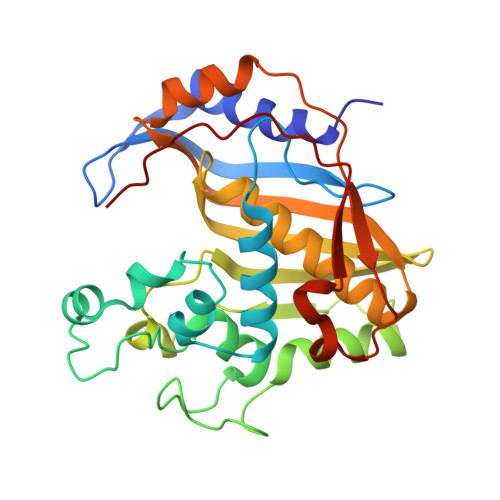Structural analyses of human thymidylate synthase reveal a site that may control conformational switching between active and inactive states
Chen, D., Jansson, A., Sim, D., Larsson, A., Nordlund, P.(2017) J Biological Chem 292: 13449-13458
- PubMed: 28634233
- DOI: https://doi.org/10.1074/jbc.M117.787267
- Primary Citation of Related Structures:
5X4W, 5X4X, 5X4Y, 5X5A, 5X5D, 5X5Q, 5X66, 5X67, 5X69 - PubMed Abstract:
Thymidylate synthase (TS) is the sole enzyme responsible for de novo biosynthesis of thymidylate (TMP) and is essential for cell proliferation and survival. Inhibition of human TS (hTS) has been extensively investigated for cancer chemotherapy, but several aspects of its activity and regulation are still uncertain. In this study, we performed comprehensive structural and biophysical studies of hTS using crystallography and thermal shift assay and provided the first detailed structural information on the conformational changes induced by ligand binding to the hTS active site. We found that upon binding of the antifolate agents raltitrexed and nolatrexed, the two insert regions in hTS, the functions of which are unclear, undergo positional shifts toward the catalytic center. We investigated the inactive conformation of hTS and found that the two insert regions are also involved in the conformational transition between the active and inactive state of hTS. Moreover, we identified a ligand-binding site in the dimer interface, suggesting that the cavity in the dimer interface could serve as an allosteric site of hTS to regulate the conformational switching between the active and inactive states. On the basis of these findings, we propose a regulatory mechanism of hTS activity that involves allosteric regulation of interactions of hTS with its own mRNA depending on cellular demands for TMP.
Organizational Affiliation:
From the School of Biological Sciences, Lab 07-02 and.




















